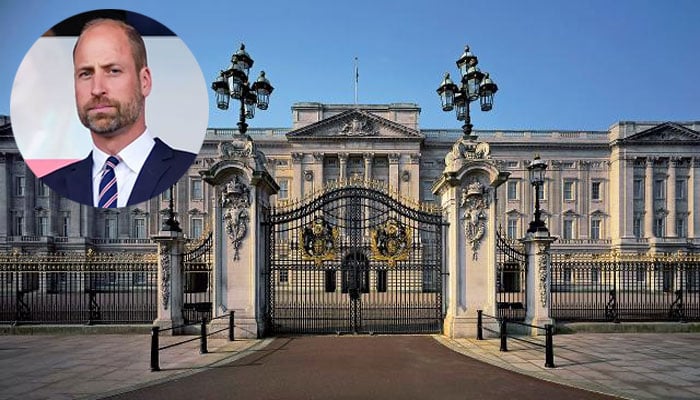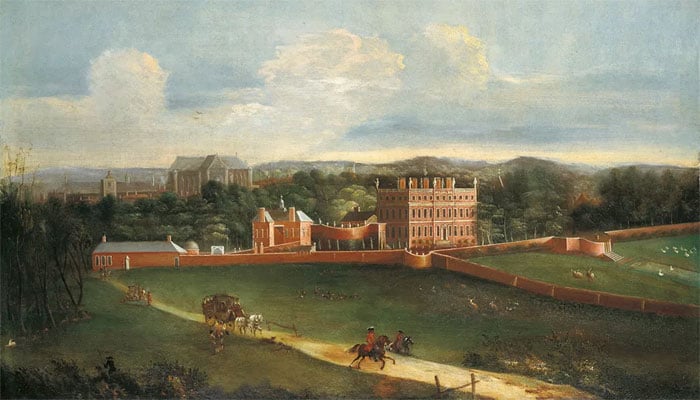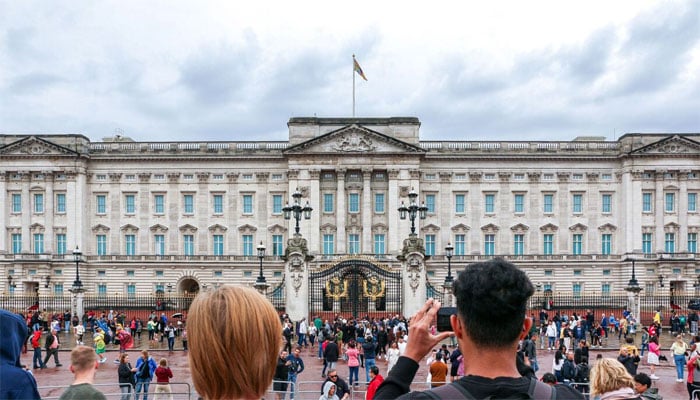Home / Royals
William indifferent towards Buckingham? Dive into historical legacy of future king’s unfavoured royal landmark
Buckingham Palace reportedly in danger of being demoted to a reduced status under William’s rule

It is no secret by now that Prince William has major plans of his own for the future of monarchy — and it appears that Buckingham Palace will not be a part of them.
Royal biographer Ingrid Seward recently told HELLO!, “William was never going to move into Buckingham Palace.”
Further hailing the heir apparent’s “visionary” status where the his future planning is concerned, she revealed, “He has never had any fondness for it, and he probably hasn’t spent much time there.”
While Buckingham has been treated to a great deal of significance as the official residence of British monarchs for a long time, there have been moments in the past when a ruler has been left “devastated” when forced to move into the great residence.
It was none other than William’s grandmother and former monarch, Queen Elizabeth, who was instructed by her then prime minister, Winston Churchill, to honour Buckingham’s significance.
“The Queen and Prince Philip were devastated when they had to move out of Clarence House; Winston Churchill told them that the Queen had to live in a palace. But that was then, and this is now. Maybe Buckingham Palace will open to the public all year round, rather than only in the summer, and they will use Windsor Castle for banquets,” Seward added.
Important to note here is the fact that King Charles also prefers to remain at Clarence House and hasn’t moved into Buckingham still — though carrying out official engagements at the venue.
If it really is curtains for the iconic royal landmark, let’s dig into Buckingham Palace’s well-statured legacy and role in the royal family before it is potentially sidelined.
History

Buckingham was actually not a palace at all when it first became part of the royal family’s history.
Named after John Sheffield, Duke of Buckingham, the residence was initially known as Buckingham House when it was procured by King George III in 1761.
Since the King intended his new purchase to be a home for Queen Charlotte, his wife, Buckingham came to be known as “The Queen’s House”.
It wasn’t until their son, King George IV ascended to the throne that Buckingham underwent refurbishment to be turned into a palace.
According to the Royal Collection Trust however, “The furnishing stage had not been reached at Buckingham Palace during George IV’s lifetime.”
Furthermore, it was only once Queen Victoria took the reins of monarchy in 1837 that Buckingham Palace became the official home to British rulers.
The royal family’s relationship with the Palace

Akin to Prince William’s sentiments regarding Buckingham, the residence has always seemed less of a residence to the royal family and their ancestors and more like a workplace.
Due to the Palace’s grand facade filled with historic royal remnants, it can often feel like one big exhibition rather than exuding a homely warmth.
This phenomenon was further explained by royal biographer and expert Robert Lacey in an interview with The Telegraph.
“I think, actually, as an office it has been very successful. As a ceremonial figurehead for the royal family, as the place that visitors identify with, it’s been a great success,” he stated.
Moreover, for the Prince of Wales and the future king, Buckingham Palace may evoke bitter reminders of the past — his mother, Princess Diana’s suffering within its walls.
While much has been written and discussed about Diana’s time at Buckingham — the place she called home in the days leading up to her wedding day — her own admission about being “terribly lonely” was further unearthed in a personal letter she wrote to a palace footman, Mark Simpson.
“My stay was made so much easier by your company as it was so terribly lonely + we had so many laughs for that I can’t thank you enough. Do hope you were able to enjoy Wednesday + that you liked my dress?” she communicated in a note which was part of an auction in June 2025.
As an intriguing aside, a former king by the name of William IV also refused to move into Buckingham Palace.
Being King George IV’s successor, “his brother William IV, showed no interest in moving from his home at Clarence House, and, when the old Houses of Parliament were destroyed by fire, he offered the still-incomplete Buckingham Palace as a replacement,” according to the Royal Collection Trust.
Not only does Prince William share a name and his indifference for Buckingham with his ancestor, he is also poised to become King William V once he inherits the Crown.
Legacy

Buckingham Palace boasts a remarkable legacy as the official royal residence and a major tourist attraction – so much so, that according to royal commentator Richard Fitzwilliams, “It would be a disaster if Buckingham Palace were sidelined.”
As an “iconic building, comparable only to the White House and known worldwide”, the Palace attracts hordes of crowds every summer due to its current and historical significance — a major boost for British tourism.
The host venue for many state visitors, from politicians to celebrities and everyone else in between, the landmark is instantly recognisable and highly revered.
It is thus likely that the nation’s establishment will do everything in its power to preserve Buckingham Palace as the monarchy’s core.
“It absolutely must remain the center of the monarchy, whether or not William and Catherine actually live in it,” Fitzwilliams has noted.














